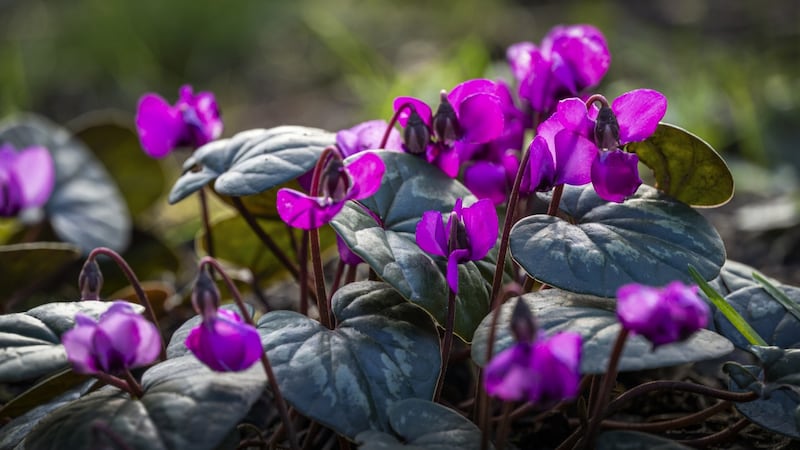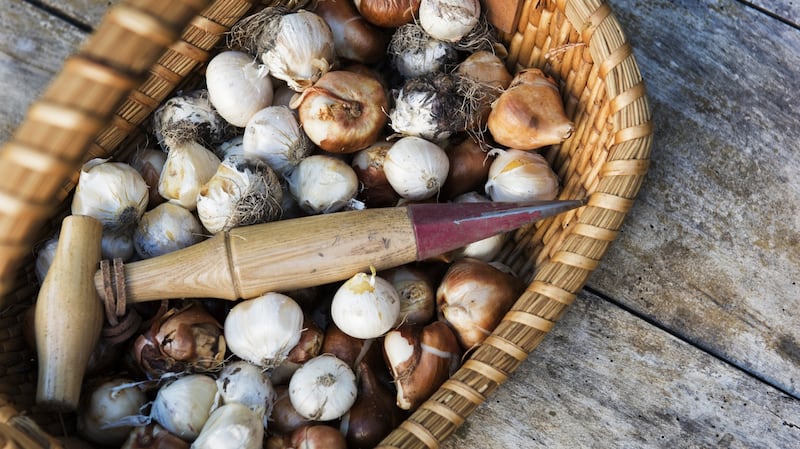In the turning of a gardening year, September is the month of reckonings and new beginnings, of bittersweet farewells and fresh starts. Few feel fresher than the annual autumn rite of bulb planting and its promise of beauty to come, each fleshy bulb buried in the ground a magic spell that sows the seeds of joy.
But the great pleasure that spring-flowering bulbs give us aside, they play an even more valuable role in supporting pollinator populations, providing them with a vital source of sweet, sugary, carbohydrate-rich nectar, the powerful fuel that bees and other pollinators depend upon for energy.
They’re also a valuable source of protein-rich pollen, which bees use to feed their young and to support their long-term health. Not only that – remember the tale of Thumbelina? – those same flowers provide them with warmth and shelter, acting as tiny, temporary, heat-storing garden pods that help cocoon them from harsh weather and cold temperatures.
In particular, early-emerging species of bees, reluctantly roused from their winter hibernation by the sort of unseasonably mild weather that the country experienced at the beginning of this year, will be especially grateful for the food provided by the late-winter/early spring flowers of dainty snowdrops, reticulate irises, Cyclamen coum, crocuses, winter aconites, anemones, scillas and squills.
By mid to late spring, they can feed from tulips, narcissi, grape hyacinths, fritillaries, erythroniums, camassias and bluebells. There are also several pollinator-friendly bulbous species that, if planted this autumn, will flower next summer; examples include lilies, alliums and Nectaroscordum.

Which types/varieties are best? Start thinking like a bee and you’ll see that while many gardeners prize the extravagantly flouncy, ruffled flowers of varieties such as the much sought-after Tulip “La Belle Epoque” or Narcissus “Obdam” for their exceptional beauty, pollinators have a very different, food-oriented perspective.
Instead they’ll seek out varieties with single-flowers rather than double-blooms (flowers with many petals), as the former allow them easy access to their nectar and pollen. Species-types are also a good choice: examples include the botanical-type tulips such as Tulipa greigii, T tarda and T clusiana and wild-type narcissi such as Narcissus pseudonarcissus and Narcissus poeticus.
Bear in mind also that the phasing out of neonics, the environmentally harmful, residual, systemic pesticides whose usage is strongly implicated in the decline of pollinator populations, is not yet complete within the EU with some (but not all) commercial bulb producers continuing to use it until their stockpiles run out.
One way to avoid accidentally buying bulbs treated this way is to buy them from an organic supplier such as Cork-based Fruithill Farm, which since 2014 has been sourcing its spring-flowering bulbs from Ecobulbs, a small-scale, certified-organic arable farm in the north of North Holland managed by Koen and Annelies Timmerman.
"Organically produced bulbs are grown with a respect for the health of the soil, for the health of flora and fauna, and for the health of humans," says Fruithill Farm's sales manager Elmer Koomans, who says that demand for their range of organically produced flower bulbs has grown hugely in recent years.
The inevitable downside is that these bee-friendly bulbs often come at an extra financial cost to gardeners. Damian McHugh of Beechill Bulbs, the Offaly-based company established in 2008 that supplies a wide range of both organically-produced and non-organically produced bulbs to the trade as well as to private customers, cites the spring-flowering variety Hyacinth "Delft Blue" as an example.
“For the organic option, our customers will be paying roughly twice the price for a thousand bulbs, while those bulbs would also be 20per cent smaller [grade 14/15] than their non-organic equivalent [grade 15/16]. It’s a significant difference.”
The limited availability of many popular varieties as certified-organic bulbs is an even bigger issue, posing challenges for gardeners in search of certain choice varieties and forcing them to seek out substitutes, according to Thomas Quearney of Mr Middleton, whose long-established Dublin-based garden shop and online business supplies gardeners all round the country with spring-flowering bulbs.

“While we do our best to provide organic options, there’s a very limited range to choose from. Which is not to say that there haven’t been huge changes for the better in recent years in the way bulbs producers are now growing their products with respect for issues such as sustainability, climate change, biodiversity, soil health and water and energy consumption.
“So while we don’t stock a large range of certified-organic bulbs, we do make a point of sourcing all of our bulbs from producers who’ve signed up to a range of independent sustainability certification schemes such as On the Way to PlanetProof, Global GAP and NPS.”
The vast range of different species/varieties and the issue of sustainable production aside, bear in mind that the size and quality of the bulbs that you source will also have a direct impact on their vigour and productivity as well as their potential to accidentally introduce plant pests and diseases into your garden or allotment. So always avoid buying bulbs that look dried out, shrivelled, pocked, mouldy or bruised and only plant those that are plump, fresh, unmarked and with their protective skins or “tunics” intact.
Bear in mind also that the bigger they are (most flower bulbs are graded according to their size), the better they will grow and establish and the more floriferous they’ll be. For the same reason, when/if you’re treating certain kinds of bulbs as annuals (typically the case with many varieties of tulips), then aim to rotate the planting area each year to minimise the risk of disease, much as you would with a crop in the vegetable garden or allotment.
This way you’ll be helping to support the long-term health of your garden as well as its pollinator populations.
Recommended spring-flowering bulb suppliers: mrmiddleton.com, fruithillfarm.com, bulbs.ie ,gardenfable.com and peternyssen.com
This Week in the Garden…
This summer’s heavy rain has resulted in the perfect conditions for weed germination, so as you start to clear away finished crops in the kitchen garden or allotment, try to do everything you can to prevent new weeds from quickly colonising empty vegetable beds in the coming months.
One simple but effective technique is to cover any bare ground with a sheet of strong black plastic, with the edges trenched into the ground (use a spade to gently push it into the soil) to prevent it from blowing away during autumn storms. Alternatively, sow a green manure or cover the soil with an organic mulch.
This is a good time to order seed of sweet pea for sowing next month. Transplanted into their permanent growing positions next spring these autumn-sown plants will give you ultra-strong, vigorous, early-flowering floriferous plants next summer. Specialist online suppliers of fresh, high-quality sweet pea seed include Roger Parsons (rpsweetpeas.com ) and Somerset Sweet Peas (somersetsweetpeas.com). Recommended varieties of summer-flowering Spencer-type sweet pea include "Earl Grey", "Bristol", "Mr. P" , "Nimbus", "Wiltshire Ripple" and the ultra-long stemmed "Big Blue".













